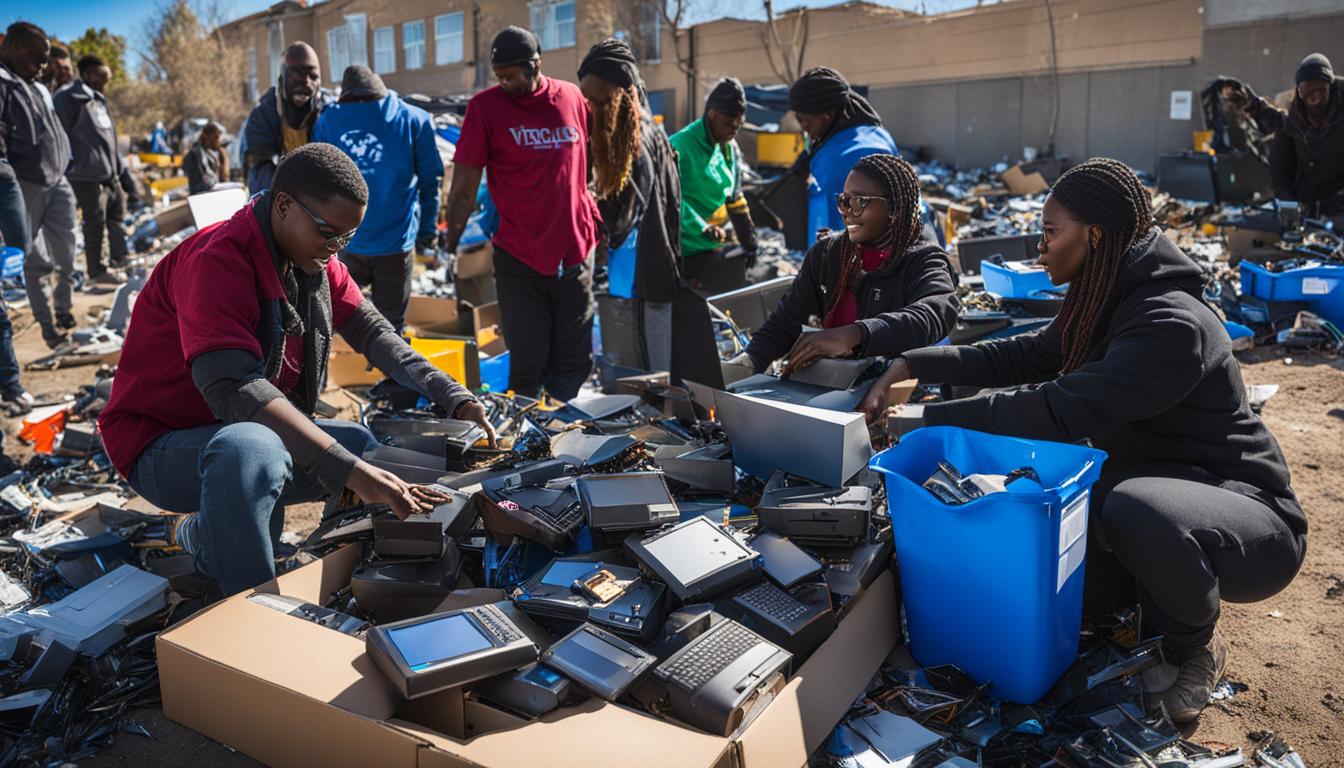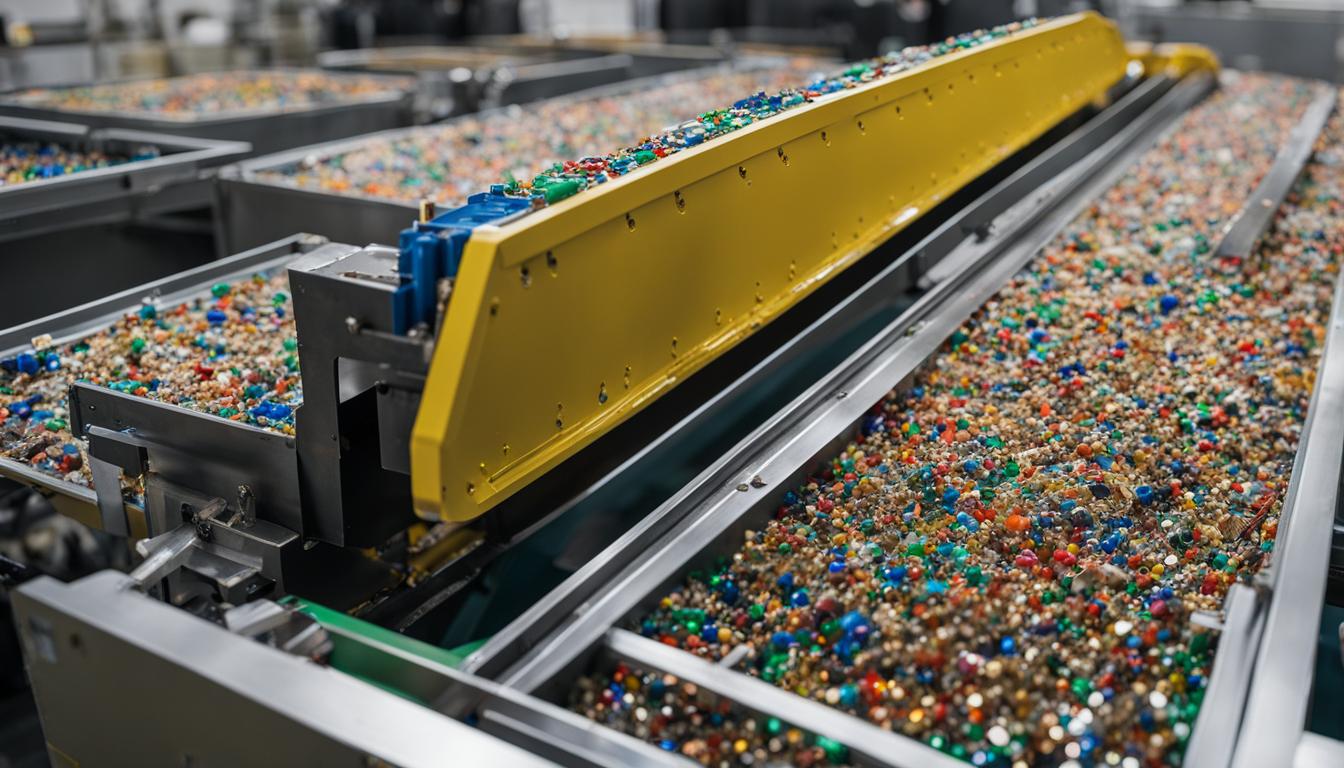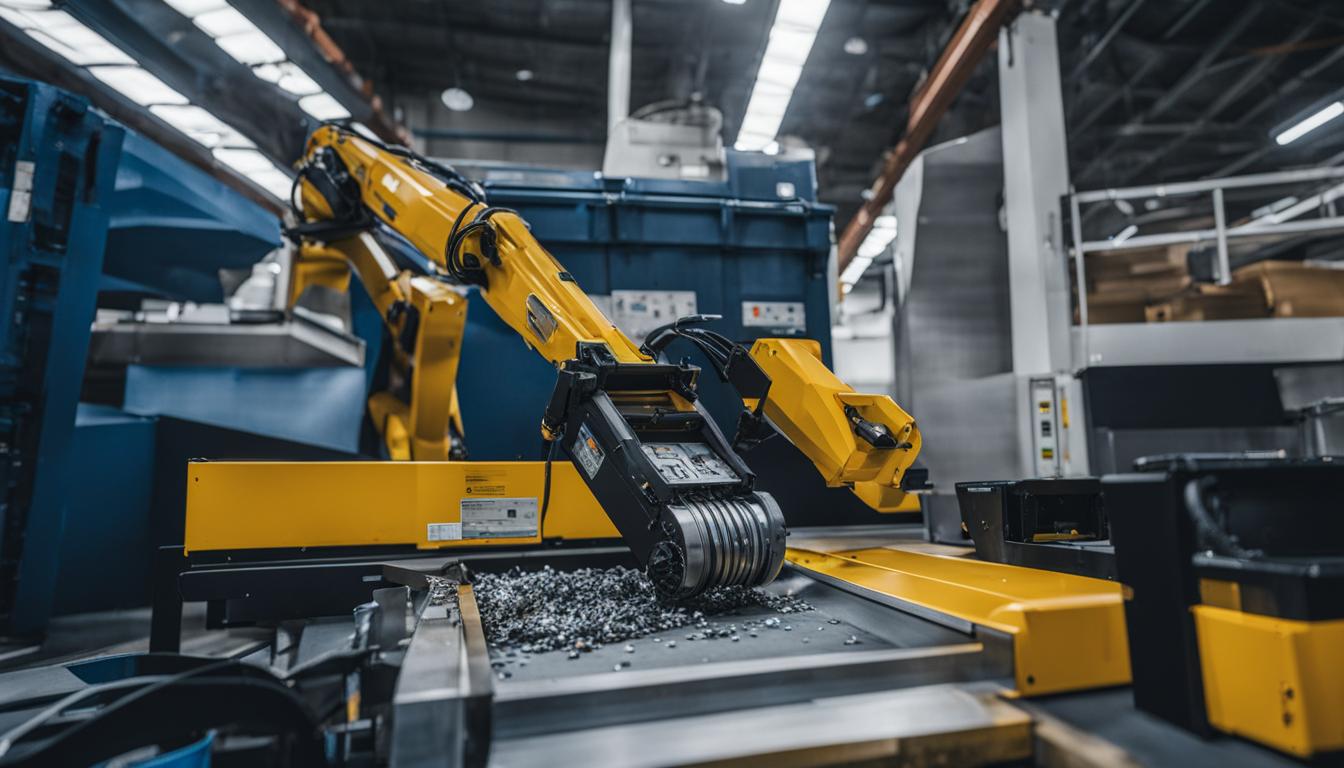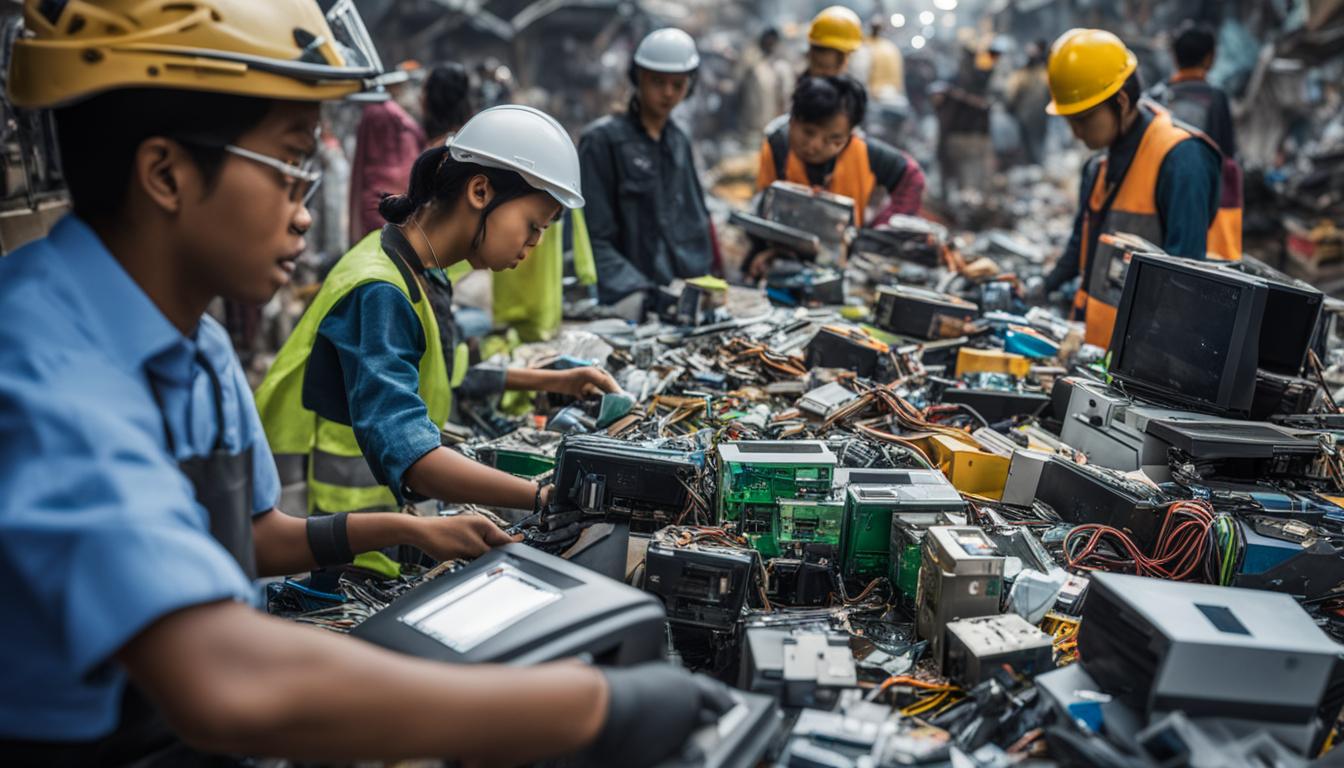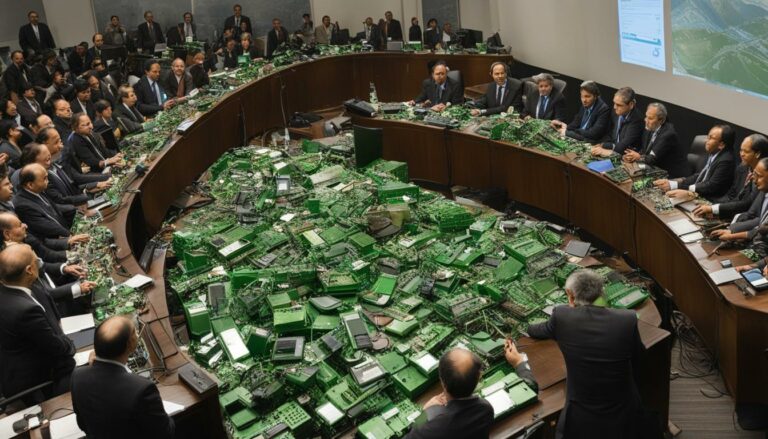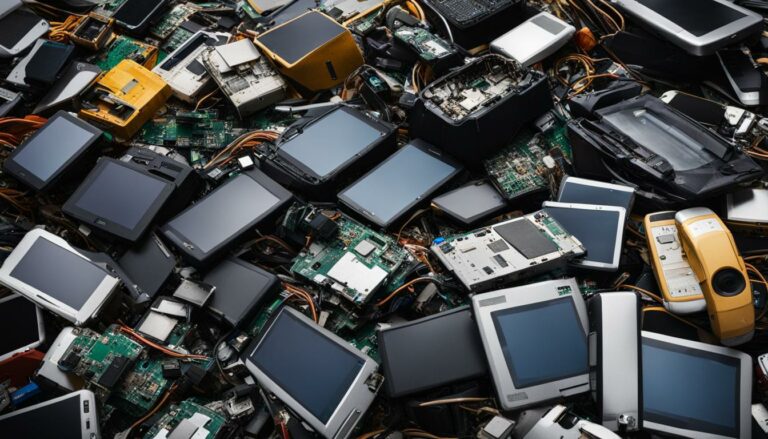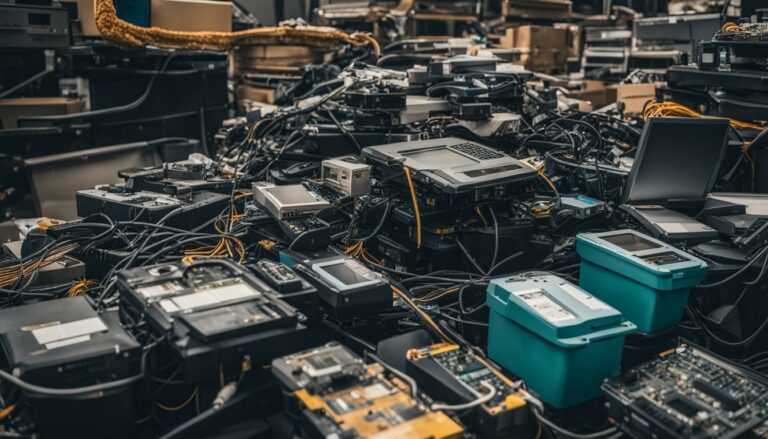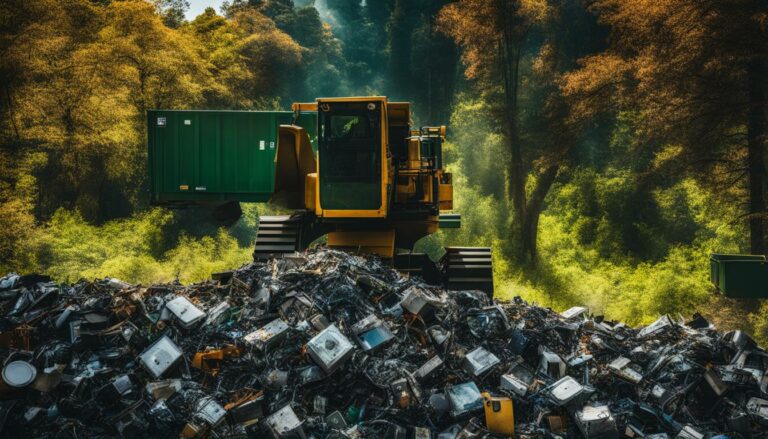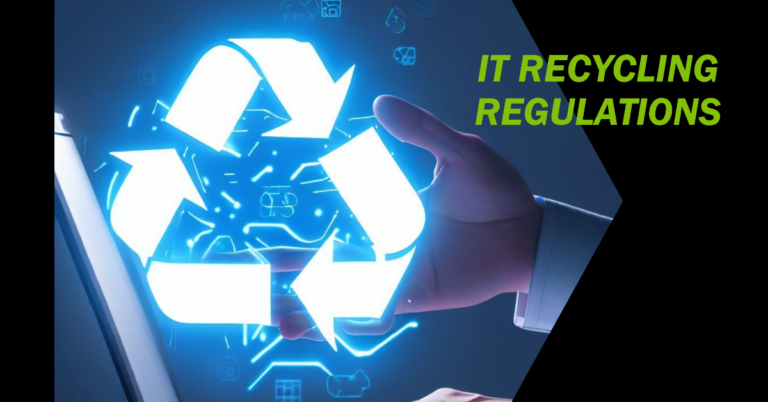Making a Difference: Start a Computer Recycling Drive Today
Start a Computer Recycling. Electronic waste, or e-waste, is a growing problem in today’s society. As technology continues to advance, more and more electronic devices are being discarded, leading to environmental damage and a waste of valuable resources. Starting a computer recycling drive can help mitigate these issues by responsibly disposing of old computers and other electronic devices. By participating in a computer recycling program, individuals and businesses can make a tangible impact on environmental preservation, reduce e-waste, and promote sustainable technology recycling.
Key Takeaways
- Starting a computer recycling drive can help reduce e-waste and promote sustainable technology recycling.
- Responsible computer recycling ensures the proper disposal of old computers and other electronic devices.
- By participating in a computer recycling program, individuals and businesses can make a difference in environmental preservation.
- E-waste is a growing problem that causes environmental damage and wastes valuable resources.
- Sustainable technology recycling is crucial for conserving natural resources and minimizing the harmful effects of e-waste.
The Importance of Computer Recycling
Electronic waste, or e-waste, production has become a pressing issue with significant environmentally harmful effects. The phenomenon of planned obsolescence contributes to the short life of electronic gadgets, further exacerbating the e-waste problem. The demand for portable devices and the availability of low-quality, affordable electronics have also led to a massive consumption of these devices. Therefore, computer recycling plays a crucial role in addressing these challenges and conserving natural resources.
Planned obsolescence, the practice of designing products with a limited lifespan to encourage consumers to purchase new ones, fuels the constant need to upgrade to the latest technology.
One of the key reasons for the importance of computer recycling is the alarming rate at which e-waste is generated. By recycling old computers and other electronic devices, valuable natural resources such as minerals and metals can be conserved. Additionally, recycling reduces the need for raw materials, energy consumption, and greenhouse gas emissions associated with the production of new electronic devices.
The environmental impact of e-waste stretches beyond the extraction and depletion of resources. Improper disposal of e-waste leads to the release of toxic substances, such as lead, mercury, and cadmium, which can contaminate soil, water sources, and the air. By recycling electronic devices properly, these toxic components can be disposed of safely, minimizing the harm to the environment and human health.
The Massive Consumption of Low-Quality Devices
- The increasing availability of low-quality, affordable electronic devices has contributed to the consumption of substandard products.
- Consumers often replace these devices more frequently due to their shorter lifespans.
- By recycling these devices, the cycle of disposal and consumption can be interrupted, promoting a shift towards more sustainable technology choices.
| Environmental Benefits of Computer Recycling | Conservation of Natural Resources |
|---|---|
| Reduces the need for raw materials | Preserves valuable minerals and metals |
| Reduces energy consumption | Prevents resource depletion |
| Lowers greenhouse gas emissions | Minimizes the environmental impact of mining |
The Process of Computer Recycling
The process of computer recycling is a crucial step in responsible e-waste management. It involves several stages to ensure the proper disposal and recycling of electronic waste.
1. Collection of e-waste
The first step in computer recycling is the collection of e-waste from individuals, businesses, and corporate offices. This can be done through e-waste drop-off events or pick-up services. By collecting e-waste, the amount of electronic devices ending up in landfills is reduced, minimizing their negative impact on the environment.
2. Sorting of e-waste
Once collected, the e-waste undergoes sorting based on type and material. This process ensures that different components are separated appropriately for recycling. It is crucial to sort e-waste to identify and handle toxic components, such as lead, mercury, and hazardous chemicals, in a safe and proper manner. By sorting e-waste, the recycling process becomes more efficient and effective.
3. Proper disposal of toxic components
The next step in computer recycling is the proper disposal of toxic components. Specialized recycling facilities are equipped to handle and dispose of these hazardous materials safely. With proper disposal, the risk of these toxic substances leaching into the environment is significantly reduced, protecting both human health and the ecosystem.
4. Recycling facilities
The sorted e-waste is then sent to certified recycling facilities. These facilities have the necessary equipment and expertise to dismantle electronic devices and recover valuable materials for reuse. By recycling e-waste, valuable resources like metals, plastics, and glass can be extracted and used in the production of new electronic devices, reducing the demand for virgin materials.
5. Data destruction
Data security is a crucial aspect of computer recycling. Certified recycling facilities ensure that all data stored on recycled devices is securely destroyed. Advanced data destruction methods, such as secure wiping or physical destruction of storage devices, are employed to protect sensitive information from falling into the wrong hands.
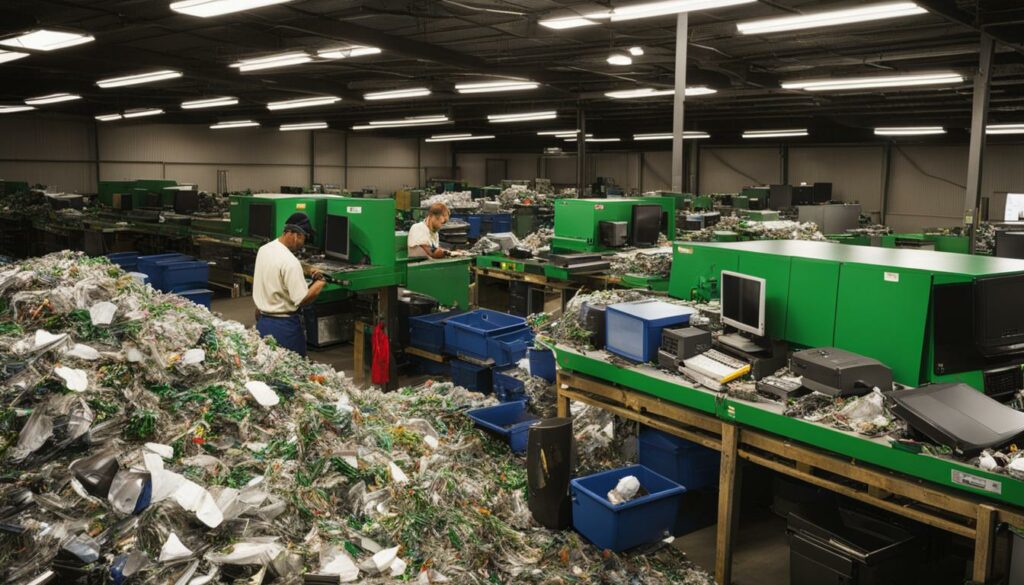
Table: Components and materials commonly recycled in computer recycling.
| Component/Material | Potential Recycling Method |
|---|---|
| Metals (such as copper, aluminum, gold) | Smelting, refining |
| Plastics | Sorting, grinding, melting |
| Glass | Crushing, melting |
| Printed Circuit Boards | Smelting, chemical treatment |
| Batteries | Chemical treatment, metal refining |
Reporting and Benefits of Computer Recycling
Once the process of computer recycling is complete, it is essential to report the amount of e-waste that has been recycled. This reporting can be done for various stakeholders, including partners, shareholders, potential investors, or the general public. By reporting the amount of e-waste recycled, businesses can showcase their commitment to environmental preservation and sustainability.
In some cases, businesses may even generate revenue from the recycled materials by selling them to certified recycling facilities. This not only contributes to the circular economy but also helps offset the costs associated with the recycling process. By turning e-waste into a valuable resource, businesses can not only reduce their environmental impact but also benefit financially.
| Benefits of Computer Recycling | Statistics |
|---|---|
| Environmental Scorecards | 87% reduction in carbon footprint |
| Revenue from Recycled Materials | £1.2 million earned in the past year |
| Carbon Footprint Reduction | 2,500 metric tons of CO2 saved annually |
In addition to potential revenue, businesses can also measure their environmental impact through the use of environmental scorecards. These scorecards track the total amount of equipment diverted from landfills and the reduction of the company’s carbon footprint. By monitoring these metrics, businesses can set goals for continuous improvement and demonstrate their commitment to sustainability.
By participating in computer recycling programs and actively reporting their efforts, businesses can contribute to a greener and more eco-friendly future. Through responsible e-waste recycling, revenue generation, and carbon footprint reduction, companies can align their operations with environmental preservation while also benefiting their bottom line.
Conclusion
Starting a computer recycling drive is a powerful way to make a difference in environmental preservation. By responsibly disposing of old computers and other electronic devices through computer recycling services, individuals and businesses can help reduce e-waste and promote environmentally friendly recycling. The proper management of e-waste is crucial to minimize the detrimental effects on our planet and conserve natural resources.
The process of computer recycling involves the collection, sorting, and responsible disposal of e-waste. Through IT recycling services, old computers are dismantled and valuable materials are recycled, contributing to sustainable technology recycling. It is important to ensure secure data destruction during the recycling process to protect sensitive information.
Reporting the amount of e-waste recycled and the benefits of computer recycling showcases a commitment to responsible environmental practices. It allows businesses to demonstrate their dedication to responsible computer recycling and contribute to a more sustainable future. Additionally, it enables them to monitor their carbon footprint reduction and earn revenue from selling recycled materials to certified recycling facilities.
So, take the first step and start a computer recycling drive today to contribute to a greener and more eco-friendly future. By participating in computer recycling services, you can play a vital role in e-waste management, promote responsible computer recycling, and ensure the sustainable disposal of electronic waste.
FAQ
What is e-waste?
E-waste refers to electronic waste, which includes discarded electronic devices such as computers, laptops, smartphones, and televisions.
Why is computer recycling important?
Computer recycling is important to mitigate the harmful effects of e-waste on the environment and to conserve valuable natural resources.
How can I start a computer recycling drive?
You can start a computer recycling drive by organizing e-waste drop-off events or arranging for pick-up services to collect old computers and other electronic devices.
What happens to the e-waste after it is collected?
The collected e-waste is sorted based on type and material to ensure proper recycling. It is then sent to certified recycling facilities where it is dismantled and recycled.
How can I ensure that my sensitive information is protected during computer recycling?
It is important to choose recycling facilities that follow proper data destruction protocols to ensure the secure disposal of sensitive information.
Can businesses benefit from computer recycling?
Yes, businesses can benefit from computer recycling by showcasing their commitment to environmental preservation and potentially earning revenue from selling recycled materials to certified recycling facilities.
How can businesses measure their environmental impact?
Businesses can use environmental scorecards to track the amount of equipment diverted from landfills and measure the reduction of their carbon footprint.
What are the benefits of computer recycling?
Computer recycling helps reduce e-waste, conserve natural resources, and promote sustainable technology recycling, contributing to a more eco-friendly future.
What is the first step to start a computer recycling drive?
The first step is to organize e-waste collection through drop-off events or pick-up services to gather old computers and other electronic devices.


